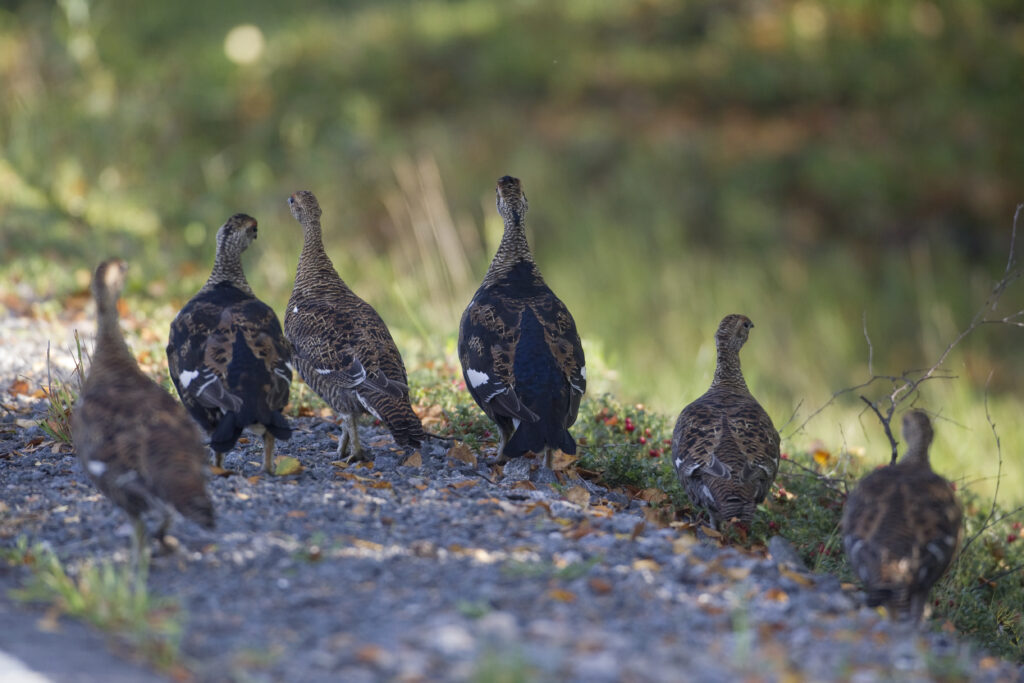How to make your forest attractive to game

Leaving thickets and clumps of blueberries in the forest could attract grouse and other game animals. “Game-Friendly Forestry” became profitable following the latest reforms of the Forest Act and the Act on the Financing of Sustainable Forestry.
“Game requires two things: somewhere to shelter and something to eat,” Mr. Janne Miettinen from the Finnish Wildlife Agency summarizes the basic rules of what could be termed game-friendly forestry. Miettinen manages the “Step into the game forest” project, which encourages forest owners to take account of game animals when planning forestry operations.
Game-friendly forestry is a fairly new concept that took off after the reforms of the Forest Act in 2014 and the Act on the Financing of Sustainable Forestry one year later. Thanks to the new acts, it is possible, for example, to leave thickets in the forest as shelter for game. Earlier, excessive undergrowth would have disqualified the forest from receiving subsidies under the Act on the Financing of Sustainable Forestry.
“Now the law allows thickets covering up to ten percent of the forestry area. For game animals, two to three percent is actually enough,” Miettinen says.
Miettinen has been involved in developing instructions for forest owners interested in game-friendly forestry. The Finnish Wildlife Agency’s ten-page manual contains practical tips related to every forestry operation. The Game-Friendly Forestry Guide by the Tapio consulting services offers additional information.
“Loggers and forest machinery operators will also need information. The instructions are a compromise between leaving enough shelter for the game and not making the work of operators too complicated.”
Continuous-cover silviculture is not a necessity

The game-friendly forestry manual has plenty of useful tips from the tending of seedling stands to thinning and regeneration felling. The manual is written from the perspective of game birds and the elk, but the forest owner has not been forgotten: game-friendly forestry does not reduce the profitability of silviculture.
If animals could choose, they would prefer mixed forest. The growing stock should be varied in size and density. The biggest logs would be removed first, and immature spruce forests would be left to provide shelter. The terrain would not be dug or overturned and would provide nourishment, such as blueberries.
However, according to Miettinen, forest owners do not need to practise only the methods of continuous-cover silviculture and upper-layer thinnings described above to provide a better habitat for game. Some fine-tuning of the methods of periodic-cover silviculture is often enough.
According to the game-friendly forestry manual, a good forest compartment contains at least three tree species. For example, pine guarantees the winter food supply of the capercaillie (Tetrao urogallus), while the black grouse (Tetrao tetrix) prefers birch and the hazel grouse (Tetrastes bonasia) needs alder. Spruce provides shelter for all game species.
Mires and forest fringes are important
A coniferous swamp is an example of an area absolutely worth saving as a haven for game. Coniferous swamps are important especially for grouse chicks. It is also useful for biodiversity if mires with forest cover are saved.
“After the regeneration felling of a coniferous swamp, a lot of costly forest management is needed. Taking this into account, continuous-cover silviculture may actually be more profitable,” says Miettinen.
Upper-layer thinning, that is, removing the largest trees and leaving the broadleaf trees, as well as selection cutting are suitable methods for what are called transition zones between the forest and a mire. These zones are important for young birds. Mammals feel at home in forests next to cultivated fields.
Ditched, open mires are worth restoring to their natural state if tree growth has not improved despite the ditching. Even just a few hectares of mire are sufficient to make a courting ground for both the willow ptarmigan (Lagopus lagopus) and the black grouse.
Hunters own one third of Finland

Miettinen points out that game-friendly forestry is long-term work, in the way of all forest management. He believes that game-friendly forestry will find many supporters, for half of Finland’s family forests are owned by people who like to hunt. This is equal to one third of Finland’s land area.
Game-friendly forestry can improve biodiversity, bring variation into the landscape and increase the recreational use of forests without causing additional costs or economic loss for forest owners.
“It is an example of forestry with multiple objectives, which takes into account the overall wellbeing produced by forests,” says Miettinen.
“Step into the game forest” is a project run by the Finnish Wildlife Agency and the Finnish Forest Centre. It receives funding from the Ministry of Agriculture and Forestry under the Metso forest biodiversity programme. The project is scheduled to end at the end of 2015.
The next step will be to extend the project to cover the whole country, and funding has been applied for from the Life programme of the European Union. This seven-year project is also run by the Finnish Wildlife Agency and the Forest Centre, together with the forestry company UPM and the Natural Resources Institute Finland.
Research information on game and fish resources
Kirjoita kommentti